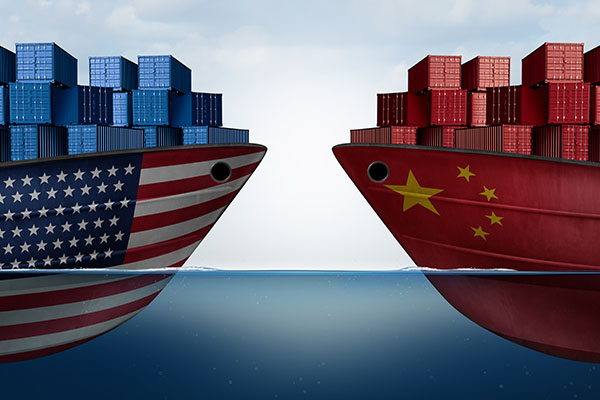Ahead of tariff crunch, U.S.-bound import numbers see strong June gains, reports Panjiva
With global shippers looking to get in front of the beginning phase of recently implemented tariffs, United States-bound waterborne shipments saw gains in June.

With global shippers looking to get in front of the beginning phase of recently implemented tariffs, United States-bound waterborne shipments saw gains in June, according to data recently released by global trade intelligence firm Panjiva.
June shipments, at 1,025,643, were up 6.5% annually. This represents another month of growth, with the exception of a 0.2% decline in March, which was the first one going back to a 7.7% annual drop-off in February 2017. Through the first six months of the year, Panjiva said U.S.-bound imports are up 6.5% annually at 5,870,275.
“Putting aside the tariff duties, there is clearly solid underlying growth in trade activity,” said Chris Rogers, Panjiva research director, in an interview. “There was a big surge in June, and the second quarter as a whole was up around 5% [4.8%] compared to a year ago, when there was not this kind of ‘tariff rush.’ And if you look at things like business sentiment and consumer confidence, both of those look fairly positive as well. If it were not for tariffs, we would be pretty well set up for another great year for the global supply chain, which has got this complication in the way.”
The tariff rush Rogers speaks of is highlighted by China-bound imports to the U.S. being up 13% in June, which far outpaced a 3% gain in May and are also above typical Peak Season levels, he said.
With the White House recently announcing it plans to add tariffs of 10% on an additional $200 billion of Chinese imports, he explained that creates additional uncertainty in the middle of Peak Season.
“The supply chain question for shippers with this really is ‘do I rush my imports to try to beat the tariffs or do I run the risk that it never happens and don’t end up with inventory I don’t need,’” said Rogers.
What’s more, Rogers added that many companies have already indicated they will need to raise prices to counter the tariff impact, especially those in similar industries so that it is not just a few companies raising prices.
“On one hand, Peak Season will be earlier than normal,” he said, “ and on the other hand, it remains to be seen if companies will play chicken with President Trump and maybe consumers pay the price. We will have a better idea of how that plays out in the coming weeks, and that is important for logistics services providers, freight forwarders, and ocean cargo carriers. They need to be ready for an early Peak Season, but it may be one that does not come. This really cannot come at a worse time for the container lines that are struggling with profitability and are talking about cutting routes and making potential alliances. This uncertainty is not going to help.”
If there were to be no major impact from tariffs in the second half of 2018, which remains to be seen, Rogers said U.S.-bound shipments would be up 5% annually at 12.19 million shipments, which would be the highest number on record.
As for the second half of 2018 over all, Rogers said the potential of a broader economic slowdown caused by tariffs needs to be closely monitored.
“It is not just about the U.S. and China,” he said. “It is also about the supply chains upstream from there are doing….and could lead to higher costs for other things too. If Trump and Xi could reach some type of agreement to not disagree, that would be great, and if they don't things could go downhill from there.”

Article Topics
3PL News & Resources
FTR Shippers Conditions Index enters negative territory DAT March Truckload Volume Index sees modest March gains National diesel average, for week of April 22, is down for the second straight week UPS reports first quarter earnings declines LM Podcast Series: Assessing the freight transportation and logistics markets with Tom Nightingale, AFS Logistics Investor expectations continue to influence supply chain decision-making XPO opens up three new services acquired through auction of Yellow’s properties and assets More 3PLLatest in Logistics
FTR Shippers Conditions Index enters negative territory DAT March Truckload Volume Index sees modest March gains National diesel average, for week of April 22, is down for the second straight week UPS reports first quarter earnings declines LM Podcast Series: Assessing the freight transportation and logistics markets with Tom Nightingale, AFS Logistics Investor expectations continue to influence supply chain decision-making The Next Big Steps in Supply Chain Digitalization More LogisticsAbout the Author
Subscribe to Logistics Management Magazine

Find out what the world's most innovative companies are doing to improve productivity in their plants and distribution centers.
Start your FREE subscription today.
April 2023 Logistics Management

Latest Resources














